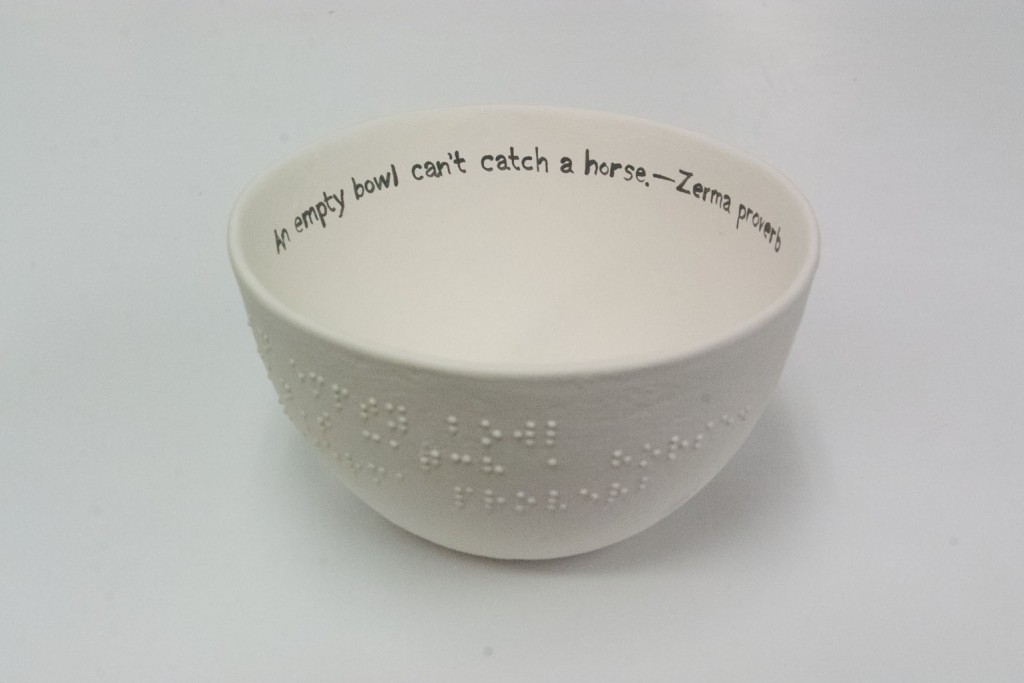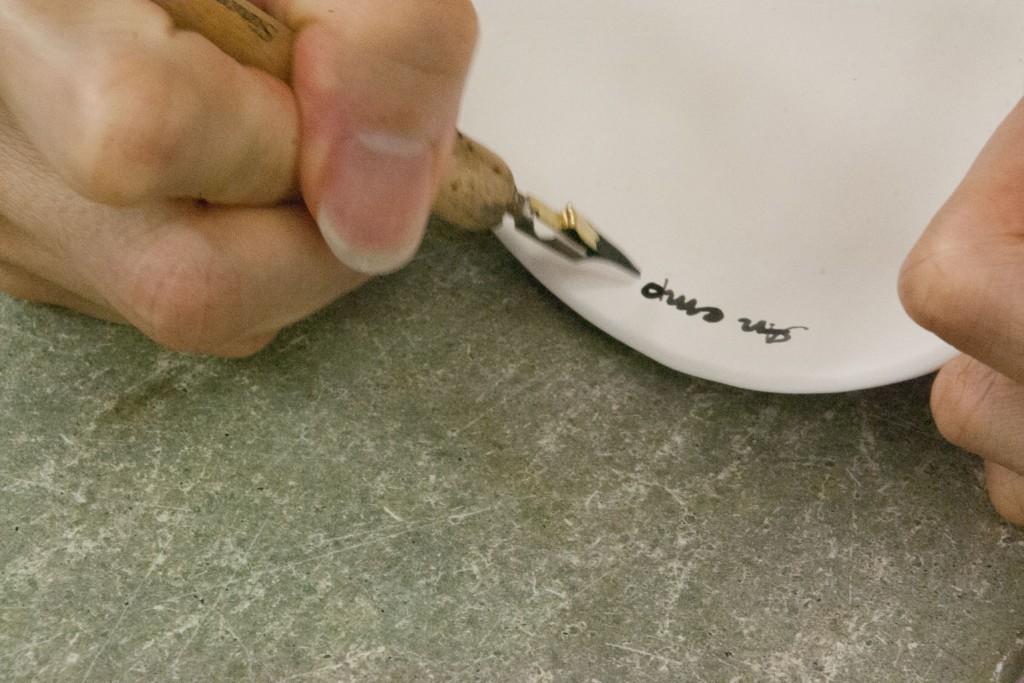Calligraphy

The calligraphy was done after the bowls were bisqued (gone through a low-temperature bisque firing) by using a regular steel-nibbed pen. The only difference between doing calligraphy on paper and on these bowls was that instead of ink, underglaze was used.
When I first mentioned I was going to write on the bowls, I was asked: Is this something you know how to do?
I indeed did. However, although I had written on a dish (or maybe you might considered it a bowl) as early as last November, it was with a brush and I did not experiment with nibs until January this year. I tested a few nibs on the outside of a double-shot-glass-sized cup and proclaimed the Speedball C-5 good for my calligraphic purposes.
My new bowls, however, were not going to be the same as my old dishes and cups. They were going to have braille on the outside. Because of this, I had decided early on that the outside should be coloured. So writing on the outside was not really an option: I would have to write on the inside of the bowls.
Although I had already written on the inside of a dish before, writing on the inside of a bowl-shaped form presented a challenge: For the bowls with writing that go vertically, I was able to hold the pen the normal way; however, for those with writing that go horizontally, it was not possible for me to position my hands in a way that could allow me to hold my pen in a normal writing position. So, as long as I was going to do calligraphy instead of lettering, I would have to hold the pen backwards in order to write on the inside.
The result of this backward position is the characteristic left-leaning writing on most of my bowls.
